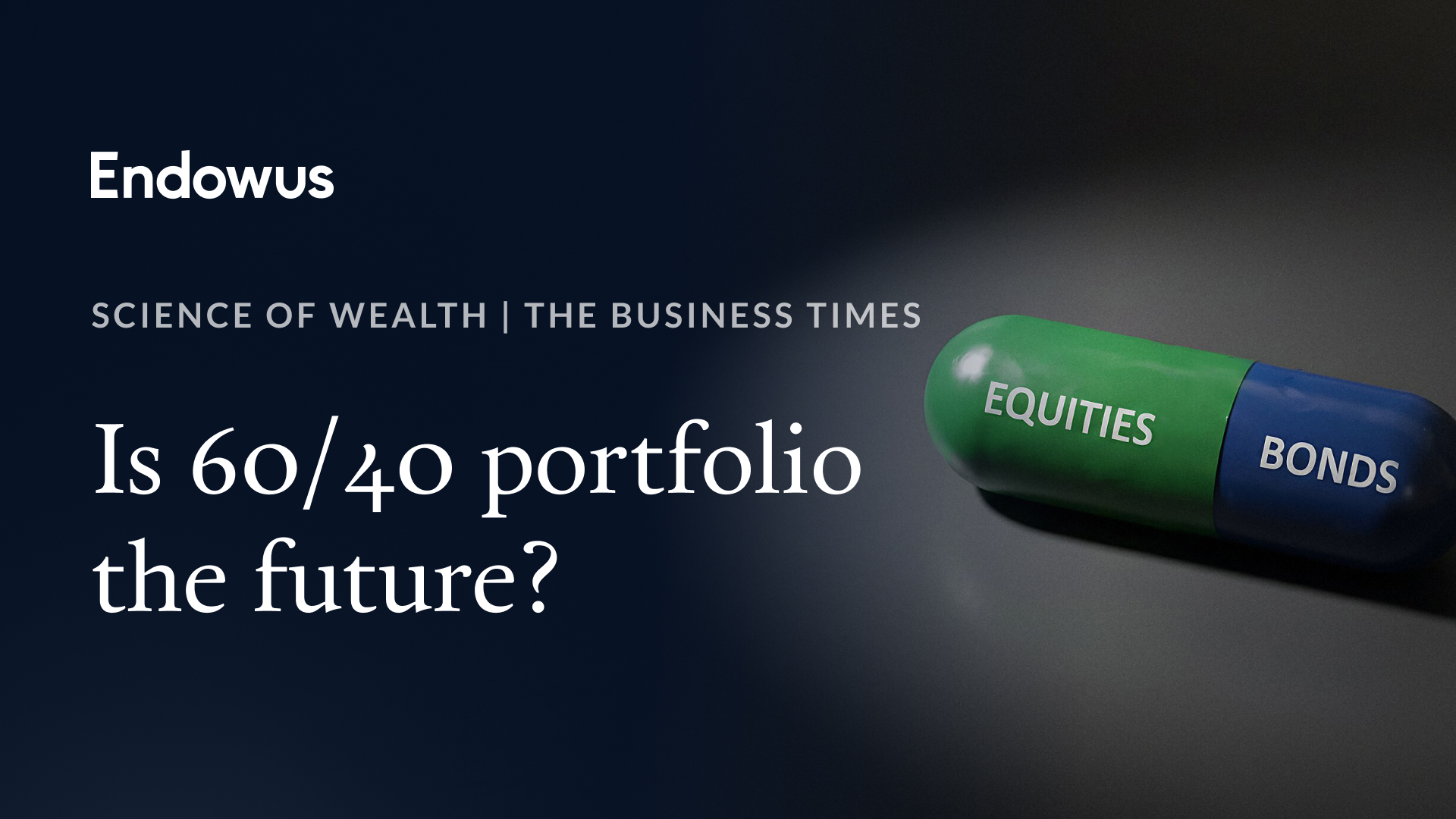Register for the event
Endowus invites you to our exclusive event with Macquarie Asset Management, as we discuss unlocking opportunities in Infrastructure- a $1.3tn asset class.
This event is reserved for Accredited Investors (AIs) only. To register for the event, please indicate one of the following:
Buying a bond only for its yield is like getting married only for the sex
– Benjamin Graham
"Psssst. I know a stock that's going to make you 10 times your money."
We've all heard that claim before. Your blood rushes, eyes dilate, and heart jumps a beat - even if it rarely pans out that way. Have you ever gotten a hot tip on a bond? Probably not. Bonds don't make the most exciting dinner table conversation, but they can be an essential part of your portfolio.
The media tends to almost exclusively focus on the gyrations of the stock market, but the bond market is actually the largest securities market in the world. It is more than a $100 trillion global market, larger than all of the global stock exchanges combined, and even larger than the total world GDP (World Bank estimated this to be $74.1 trillion in 2016). There are over 344,000 bond securities in issuance versus 50,000 listed equities globally. Perhaps we shy away from bonds because we think bonds are more complicated than they actually are.
What are Bonds?
A bond is simply a loan to a company that requires money.
As an example: "I will lend Marvel Co. $100,000 and Marvel Co. will pay me $5,000 per year (periodic interest payment) until they pay back the $100,000 (principal amount) ten years (duration) from now."
As an investor, this is pretty cool because you receive periodic interest payments, and you derive a regular and predictable income from it. Perhaps even more importantly, unlike equities where you have the risk of losing your principal investment on that 10-bagger your friend recommended, there is no principal risk with a bond (provided it doesn't default) as you get the original amount back at the time of maturity just like with a loan being repaid.
Role of Bonds in Portfolio Allocation
As an investment, adding bonds to your portfolio diversifies your assets and smooths out returns over the long-term. In most cases, stocks and bonds have low or negative correlation, which means that their prices do not move in the same direction or with the same magnitude.
Acting as a counterweight to equity market movements
Bonds have proven to hold up during market downturns: In the last 20 bear markets in the US since 1928 when the S&P 500 declined by 20% or more, the average return from long-term government bonds was a positive 5% and the median return was also a positive 3.2%. (Source: Bloomberg)
Lowering investment portfolio's volatilty
Bonds have also historically been less volatile than stocks thanks to where they sit in a company's capital structure. Bonds are senior to stocks in that bondholders have to be paid back in full before stockholders get a cent if a company were to go belly-up.
As a result, bond prices will fluctuate less - but this doesn't mean bonds can't make you money. When bonds are undervalued or if interest rates fall, bond prices can have significant moves, with bond indexes often returning double-digit gains which are sometimes even higher than bull market equity returns.
A diversified bond portfolio is much less likely to suffer large losses in a short period of time, which is why it may make sense to increase your bond allocation as you get closer to your investment goal or retirement. In the past 45 years, intermediate government or corporate bonds have never returned a negative performance in any rolling 3 year period, as compared to equities which have had double-digit negative returns.
During periods of market uncertainty, bonds can offset the volatility of stocks in your portfolio and provide a predictable stream of income.
Understanding your risk profile matters in choosing the right bond allocation
Monitoring your bond portfolio can seem as thrilling as watching grass grow, whereas watching stocks is like the end of the Korea vs Germany game at the World Cup, especially during periods when stocks are giving you double-digit returns.
However, everyone has a different risk appetite, and it's important that you only take as much risk as you need or are willing to bear. You will only stick to your investment plan if you can stomach the volatility of your portfolio through market cycles.
So rather than avoiding bonds altogether, you should instead assess your risk tolerance and investment goals, and decide how much of your portfolio should be allocated to bonds.









.webp)




%20(1).gif)






%20F1(2).webp)

.webp)






.webp)